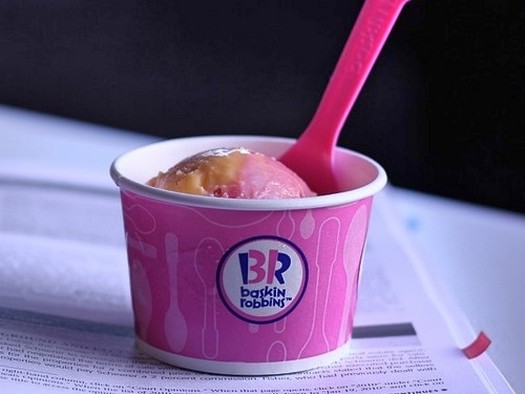- Five Forces Analysis ›
- Companies ›
- Baskin Robbins Porter Five Forces Analysis
Baskin Robbins Porter Five Forces Analysis
Five Forces analysis of Baskin Robbins covering threat of new entrants & substitutes, bargaining power of buyers & suppliers and competitive rivalry.
Threat of New Entrants:
Baskin Robbins is a globally recognized company specializing in frozen desserts, ice-creams, and related products. They serve the premium category of ice-creams and have their presence in 7500+ locations in 50+ countries. The ice-cream industry is susceptible to newer players entering and serving the market by offering its augmented propositions at different price levels. The investments required are not immense, but distribution and parlor networks would require outlay of cash. The suppliers would be relatively easy to secure, and the preparation methodologies can be devised easily. Expert workforce is not required to produce ice-creams, as the process is largely automated. Therefore, we can conclude that the threat of new entrants is a strong force, which at least at a local level, can definitely affect the competitive strategies of Baskin Robbins significantly.

Image: pixabay
This concludes the threat of new entrants in the Baskin Robbins Porter Five Forces Analysis.
Threat of Substitutes:
Below are the threats of substitute products of Porter’s Five Forces analysis of Baskin Robbins:
There are plenty of substitutes available for ice-creams, which basically satiate the need of having a cold dessert. Items like Gelatos, Frozen dessert, or traditional sweets can act as an effective substitute for Baskin Robbins ice-creams.
Also, certain companies have digressed into serving ice-creams made from natural flavors, which have started gaining customer traction because of its unique appeal and unconventional varieties. Also, chocolates, items like doughnuts and pastries, and other fast foods can also be into the consideration set of a customer looking to purchase a Baskin Robbins ice-cream. As we notice high level of variability, we can infer that the threat of substitutes is a strong force affecting the competitive landscape for Baskin Robbins.
Read more about Baskin Robbins
Bargaining Power of Customers:
In the Baskin Robbins Porter Five Forces Analysis the bargaining power of the customers can be explained as:
Customers are technically in a sea of options, where they can choose from several ice-cream brands or different substitute products available. Baskin Robbins is a premium ice-cream company, and the customers are price sensitive in edibles category. There are no means of customer retention and increasing loyalty. The switching cost of customers too is pretty low, which means that customers are empowered to make decisions.
We may conclude that the bargaining power of customers is very high and hence it becomes a strong force to counter the strategies if Baskin Robbins.
Bargaining Power of Suppliers:
Following is the bargaining power of suppliers in the Porter’s Five Forces analysis of Baskin Robbins:
The raw material used in preparation of ice-cream is readily available and not specialized. There would be hundreds of vendors supplying the material anyway, because of the quantities required to match the scale of the demand. Baskin Robbins would be a major, sometimes only customer for these suppliers. On the other hand, these individual suppliers are no more than a speck for the ice-cream giant. The company has the power to control the prices and quality of the supply. These small contractors usually are simply price-takers from the market. There is no scope of forward integration to challenge the prowess of BR. Therefore, the bargaining power of suppliers seems to be a weak force to affect the competitiveness of Baskin Robbins.
Competitive Rivalry:
The impact of key competitors in the Baskin Robbins Porter Five Forces Analysis is as follows:
The competition in the ice-cream space is immense in every price range. In lower prices, FMCG companies like Unilever have their product offerings, while in the premium category, the company has to face stiff competition from the likes of London Dairy. Baskin Robbins also loses customers to smaller ice-cream parlors, which personalize the experience of the customer by mixing their ice-creams with toppings to give them a unique taste. Of-course, the latest introduction of natural-flavored ice-creams too is acting as a competition to the contemporary players like Baskin Robbins. The switching cost of customers is very negligible, which purchases from multiple brands and is rarely loyal to any particular company.
Therefore, we can conclude that the competitive rivalry is a strong force affecting the competitive strategies for Baskin Robbins.
To conclude, the above Baskin Robbins Porter Five Forces Analysis highlights the various elements which impact its competitive environment. This understanding helps to evaluate the various external business factors for any company.
This article has been researched & authored by the Content & Research Team which comprises of MBA students, management professionals, and industry experts. It has been reviewed & published by the MBA Skool Team. The content on MBA Skool has been created for educational & academic purpose only.
Browse analysis of more brands and companies similar to Baskin Robbins Porter Five Forces Analysis. This section covers many brands and companies.
Continue Reading:
The names and other brand information used in the Five Forces Analysis section are properties of their respective companies. The companies are not associated with MBA Skool in any way.
What is MBA Skool?About Us
MBA Skool is a Knowledge Resource for Management Students, Aspirants & Professionals.
Business Courses
Quizzes & Skills
Quizzes test your expertise in business and Skill tests evaluate your management traits
Related Content
All Business Sections
Write for Us